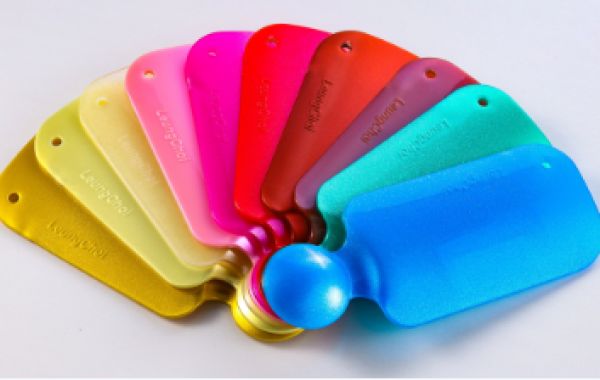Many friends who are just engaged in or want to engage in the masterbatch production industry have a big doubt. It is the requirements of masterbatch production to explain this problem, then we will start with the requirements of color masterbatch with colorants.
Requirements Of Color Masterbatches
The color masterbatch must pay attention to the relationship between the color, plastic raw materials and additives.
(1).Colorants cannot react with resin and various additives, and have strong solvent resistance, low migration and good heat resistance. That is to say, the color masterbatch can not participate in various chemical reactions. For example, carbon black can control the curing reaction of polyester plastic, so it can not be added to polyester with carbon black material.
As the plastic products molding processing temperature is high, so the color pigment should not decompose and change color under the molding heating temperature condition. General inorganic pigment heat resistance is better, organic pigment and dye heat resistance is poor, this should be in the selection of color varieties to pay sufficient attention to. Click on the bottom left corner to read the original article, a key to purchase EC5011A breathable rubber granules!
(2).The dispersion of color pigment, coloring power should be good. When the colorant dispersion is not uniform, it will affect the appearance of the product performance; colorant coloring power is poor, it will make the colorant dosage increase, material costs increase. The same color in different resin dispersion and coloring power is not the same, so in the selection of color should pay attention to this point.
The smaller the particle size of the pigment, the better the dispersion and the stronger the coloring power.
(3).Other properties of colorants should be understood, such as for plastic products used in food and children's toys, the colorants should be non-toxic; for plastic products used in electrical appliances, the colorants with good electrical insulation should be selected; for plastic products used in outdoor areas, the colorants with good weather aging resistance should be selected, etc.
The Production Process Of Masterbatches
The production process of masterbatches is very strict and generally adopts the wet process. The masterbatch material is made by water phase grinding, phase transfer, washing, drying and granulation, only then the product quality can be guaranteed.
In addition pigments should be ground and treated at the same time, a series of tests should be carried out, such as the determination of the fineness of the sanding slurry, the determination of the diffusion properties of the sanding slurry, the determination of the solid content of the sanding slurry and the determination of the fineness of the color paste and other items. Click on the bottom left corner to read the original article, one click to purchase EC5011A breathable adhesive granules!
There are four methods for the production process of color masterbatch material.
1.Ink Method
As the name implies, the production method of ink color paste is used in the production of masterbatches, i.e., the pigment is covered with a low molecular protective layer on the surface by three-roller grinding. The finely ground color paste is then mixed with the carrier resin and then plasticized by a two-roller plasticizer (also called a two-roller opener) and finally granulated by a single-screw or twin-screw extruder.
2.Rinsing Method
The pigment, water and dispersant are sanded to make the pigment particles less than 1μm, and the pigment is transferred to the oil phase by the phase transfer method, and then dried to make masterbatches. Organic solvent is needed for phase transfer, as well as the corresponding solvent recovery device.
3.Pinch Method
After mixing the pigment and the oil carrier, the pigment is kneaded to flush the pigment from the water phase into the oil phase by using the characteristic of the pigment being oleophilic. At the same time, the surface of the pigment is covered by the oil carrier to make the pigment dispersed and stable and to prevent the pigment from coagulation.
4.Metal Soap Method
Is the pigment after grinding particle size of about 1μm, and at a certain temperature to add soap, so that each pigment particle surface layer evenly wetted by the soap, the formation of a layer of saponification solution, when the metal salt solution is added with the saponification layer on the surface of the pigment chemical reaction and generate a layer of metal soap protection layer (magnesium stearate), so that the pigment particles after grinding will not cause flocculation phenomenon, but to protect a certain degree of fineness.
Precautions For The Use Of Masterbatches
(1).The masterbatches will absorb moisture after being stored for a period of time, especially PET, ABS, PA, PC, etc. Therefore, they should be dried according to the same process as the color granules and meet the water content requirement.
(2).Masterbatches must be used with great care to achieve the desired color, as color difference and color light changes often occur.
(3).Masterbatches and other additives may react, so care should be taken when using them.
(4).Attention should be paid to the selection of dilution ratio of masterbatches. If a high dilution ratio is chosen, the production cost is lower, but it is also limited by the processing equipment.








